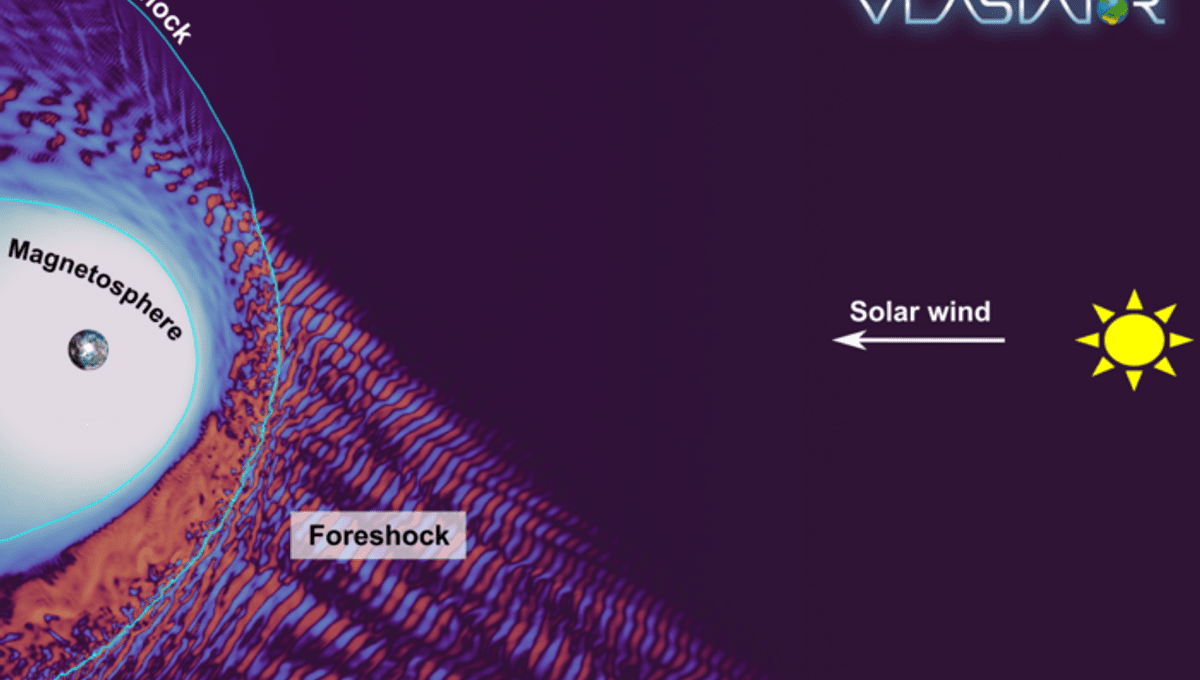
The collision of the solar wind and the Earth’s magnetic field creates an obstacle known as the shock. On the Earthward side of this barrier, forces outside generate electromagnetic waves, known as PC3 waves, that sometimes reach the surface. Outside the shock is a region known as the foreshock that has waves of its own, called 30 s waves, but it has taken astronomers decades from their discovery to understand the 30 s-PC3 connection. Since PC3 waves can pose a threat to satellites, the question has practical significance.
A team led by Dr Lucile Turc of the University of Helsinki have provided an answer to this long-standing question in Nature Physics.
“How the waves would survive passing through the shock has remained a mystery since the waves were first discovered in the 1970s. No evidence of those waves has ever been found on the other side of the shock”, Turc said in a statement.
Turc and co-authors modeled conditions in the foreshock and found their model included similar, but less easily detectable, waves to our magnetic bubble, but only just. “Once it was known what and where to look for, clear signatures of the waves were found in satellite data, confirming the numerical results”, Turc said.
The original discovery of foreshock waves led to proposals that they cross the shock unchanged to alter conditions on the inside. However, Turc found that the goings on within the foreshock and on this side are connected, but not identical.
They concluded that the solar wind is compressed and heated in its passage through the foreshock, but the extent to which this occurs is constantly changing, depending on the way previous waves have influenced the shock. The shock is highly turbulent, unsurprisingly considering the impact of the nearly unstoppable solar wind on the barely moveable geomagnetic field. This turbulence makes waves seen against such a background hard to spot.
Having crossed the shock, the waves become a small contributor to space weather, which can cause awe-inspiring auroras or fry the circuitry of satellites. The waves induced by foreshock activity represent only a small part of this, Turc says, but nevertheless need to be understood if we are to grasp the whole. Moreover, investigating them represents a chance to study other examples where streams of charged particles encounter magnetic fields, such as within clusters rich with newborn and exploding stars.
The paper is open access in Nature Physics.
Source Link: How Mysterious Space Waves Cross The Turbulent "Shock" To Affect Earth